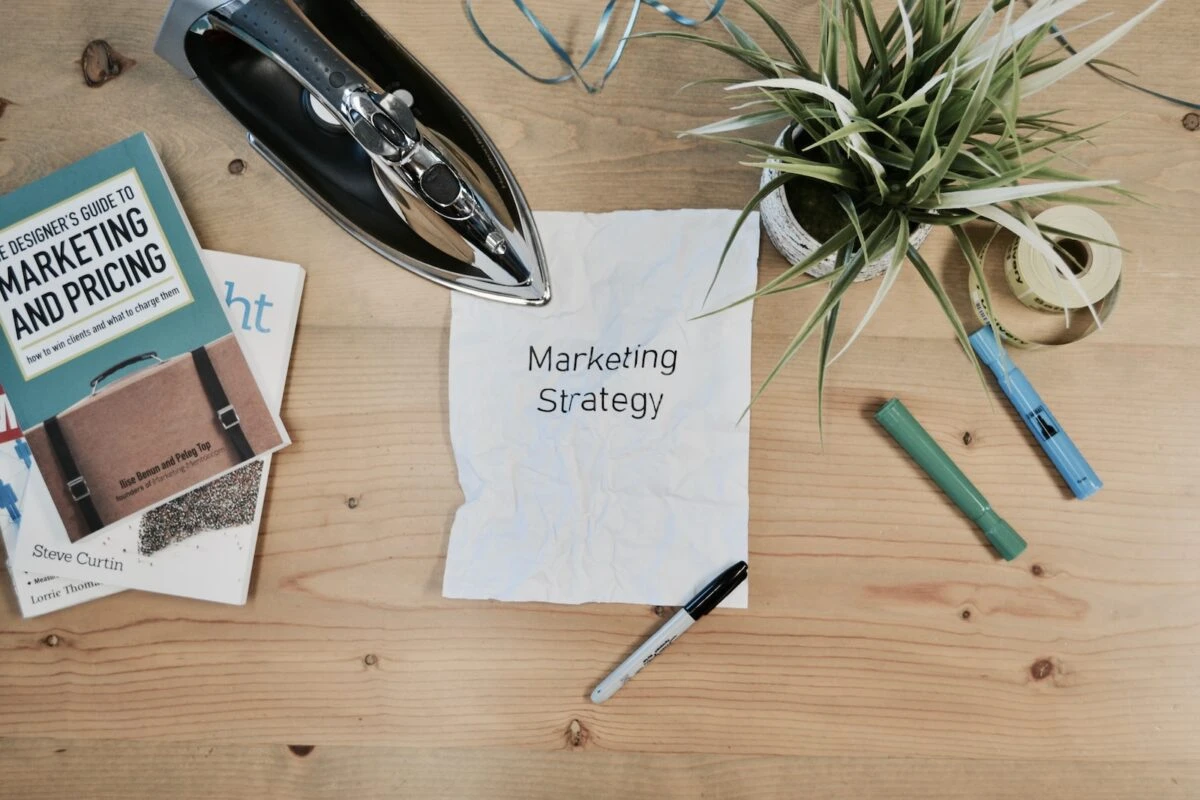The landscape of creative industries is witnessing a monumental shift, thanks to the burgeoning influence of Artificial Intelligence (AI). In realms traditionally governed by human creativity, such as video production, photo generation, and content creation, AI has emerged not just as a tool but as a transformative force. This integration of AI into creative processes is redefining what’s possible, pushing the boundaries of innovation and efficiency to new heights.
However, this wave of change brings with it a spectrum of reactions among solopreneurs and small agencies. On one end, there’s palpable excitement about the potential of AI to revolutionize workflows, unlock new creative possibilities, and drive efficiency. On the other, there’s apprehension about the future of traditional skills and the potential for AI to disrupt existing business models. These mixed reactions encapsulate the complex relationship between human creativity and machine intelligence.
Amidst these varying responses, one thing becomes increasingly clear: the importance of adapting to AI is paramount for anyone in the creative sector looking to thrive. Embracing AI is no longer just about staying current; it’s about ensuring continued success and growth in an evolving industry. This adaptation goes beyond merely employing new tools—it involves a mindset shift, recognizing AI as a collaborator that augments human creativity rather than a competitor. As we delve deeper into this topic, we’ll explore how solopreneurs and small agencies can navigate the AI revolution, leveraging it for their benefit while maintaining the essence of their creative spirit.
The AI Revolution in Creative Services
The creative services industry is currently at an inflection point, driven by the rapid advancement and integration of AI tools. This revolution is not just a trend but a fundamental shift in how creative content is produced and managed. AI’s entry into fields like video production, photo generation, and content creation is transforming these domains from their core, introducing new capabilities that were once considered impossible without human intervention.
In video production, AI tools are now capable of automating various aspects of the editing process, from color correction to scene transitions. These tools can analyze hours of footage, select the best shots, and even suggest edits, drastically reducing the time and effort required in post-production. Similarly, in the realm of photo generation, AI algorithms can enhance image quality, restore damaged photographs, or even create realistic images from textual descriptions, pushing the boundaries of traditional photography.
Content creation, too, is witnessing a sea change with AI-driven tools. From automated copywriting software that can generate drafts to algorithms that can create original music or write scripts, AI is redefining what it means to be a content creator. These tools are not only speeding up the creative process but also bringing a level of precision and personalization that was hard to achieve manually.
However, this technological disruption is met with a mix of enthusiasm and concern. For many traditional professionals, the rise of AI tools stirs fears of obsolescence. The worry is that AI might replace human creativity, rendering certain skills redundant. This perceived threat has sparked a significant debate in the creative community about the role of human talent in an increasingly automated industry.
While the apprehension is understandable, it’s essential to recognize that AI in creative services is not about replacing human talent but augmenting it. AI tools offer incredible efficiency and open up new creative possibilities, but they operate under the guidance of human creativity and expertise. The challenge and opportunity for professionals in the creative industry are to find ways to coexist with AI, leveraging its strengths to enhance their work and explore new creative frontiers.
Embracing AI for Quality and Efficiency
Amidst the initial apprehensions surrounding AI in the creative sector, a more optimistic and practical perspective is taking hold. As professionals begin to embrace AI, they are uncovering its potential to significantly enhance the quality and efficiency of their output. This shift in perception is turning AI from a perceived threat into a valuable ally in the creative process.
One of the most compelling advantages of AI is its ability to offer a competitive edge. In an industry where staying ahead means being the first to leverage new technologies, AI tools provide creative professionals with the means to do just that. They enable faster processing of data, automate repetitive tasks, and generate insights that can lead to more innovative solutions. For example, AI-driven analytics can help digital marketers understand customer preferences in real-time, allowing for more targeted and effective campaigns.
The impact of AI on service efficiency cannot be overstated. In fields like graphic design or video editing, AI tools speed up the workflow, performing tasks like image tagging or video clipping at a pace no human can match. This speed translates to faster turnaround times, a critical factor in client satisfaction and business success. It allows creative professionals to deliver more in less time, without compromising on the quality of their work.
Perhaps the most transformative aspect of AI is its role in enhancing the quality of creative deliverables. AI algorithms, equipped with learning capabilities, can analyze past trends, predict future patterns, and suggest improvements that might not be immediately obvious to human creators. This ability to refine and perfect creative outputs is invaluable in an industry where excellence is the minimum expectation.
The evolving narrative around AI in the creative industry is one of empowerment and enhancement. Rather than replacing human creativity, AI is becoming a tool that amplifies it, enabling professionals to deliver better, faster, and more innovative services. This paradigm shift is encouraging more creatives to explore AI, not with trepidation, but with a sense of curiosity and opportunity, ready to harness its potential to redefine the boundaries of their craft.
The Need for Multi-Skilled Creatives
In the AI era, the demand for multi-skilled creatives is more pronounced than ever. The rapid integration of AI into various sectors has not only expanded the scope of what’s possible in creative fields but also raised the bar for the skills required to excel. In this new landscape, being adept in a single discipline is no longer sufficient; versatility and the ability to integrate AI into one’s skillset have become indispensable assets.
For professionals in creative industries, this means embracing a broader learning curve. Skills like AI-driven data analysis, basic programming for automation, or understanding AI tools for content creation are becoming increasingly valuable. This diversification of skills allows creatives to harness AI’s power in enhancing their primary craft, whether it’s in design, marketing, writing, or multimedia production.
Integrating AI into diverse skill sets does more than just improve efficiency; it significantly elevates the quality of services offered. For instance, a graphic designer who understands AI’s capabilities in image rendering can create more nuanced and sophisticated designs. Similarly, a digital marketer proficient in AI tools can deliver more targeted and impactful campaigns by analyzing large sets of consumer data with precision.
Staying versatile and adaptable is crucial in navigating the rapidly changing market dynamics. As AI continues to evolve and influence different aspects of creative work, professionals who can quickly adapt to new technologies and integrate them into their workflow will find themselves at a significant advantage. This adaptability not only ensures relevance in a competitive job market but also opens up new opportunities for innovation and creativity.
In essence, the era of AI calls for a new breed of creatives – ones who are not just artists or strategists but are also technologists to some extent. The ability to blend creative instincts with technical know-how of AI tools is fast becoming a defining trait of successful professionals in this new era.
Diversifying Agency Services in the AI Age
The advent of AI in the creative and digital sectors isn’t just a technological shift; it’s a clarion call for agencies to rethink and diversify their service offerings. As AI continues to reshape the landscape, agencies must evolve from being mere service providers to becoming comprehensive solution architects. This transformation is crucial for staying relevant and competitive in an AI-driven market.
One pivotal strategy in this diversification is the incorporation of talent with diverse skills and the capacity to adapt swiftly. Agencies need to prioritize hiring professionals who not only excel in their primary creative fields but also demonstrate a keen understanding and adaptability to AI technologies. These multi-skilled individuals can bridge the gap between traditional creativity and AI-driven efficiency, offering a more nuanced and sophisticated approach to client projects.
The scope for diversifying services in the AI age is vast. For instance, a digital marketing agency that once focused only on content creation and SEO can now expand into AI-powered data analytics, offering clients deeper insights into consumer behavior. Similarly, a design agency can integrate AI-based design tools to offer innovative visual solutions that were previously unattainable.
However, diversification isn’t just about adding new services; it’s about enhancing the quality and depth of existing offerings. AI enables agencies to refine their workflows, automate mundane tasks, and focus more on strategic and creative aspects of projects. By doing so, agencies can position themselves as all-encompassing solution providers, capable of addressing a wide array of client needs with efficiency and expertise.
In embracing AI, agencies should aim to strike a balance – leveraging AI for operational efficiency while retaining the human touch that is central to creativity. This balanced approach ensures that the essence of their work remains intact even as they adapt to new technologies.
The AI era presents both a challenge and an opportunity for agencies to expand and enhance their service portfolios. By embracing AI, fostering a culture of continuous learning, and adapting to new market demands, agencies can transform themselves into comprehensive solution providers, equipped to meet the evolving needs of their clients in the AI-driven future.
Staying Ahead with the Right Tools
Staying current with the latest tools and software isn’t just advantageous – it’s imperative for survival and success. For businesses, especially solopreneurs and small agencies, keeping abreast of AI advancements and integrating the right tools into their operations can mean the difference between staying ahead of the curve or falling behind.
The crux of maintaining a competitive edge in today’s market lies in strategic tool selection. With an ever-growing array of AI tools available, choosing the right ones that align with a business’s specific needs and goals is crucial. These tools, whether they’re for data analytics, content creation, or customer engagement, can significantly enhance operational efficiency and creative output. For instance, an AI tool that automates social media content creation can free up significant time for a digital marketing agency, allowing them to focus on more complex and strategic aspects of their campaigns.
However, it’s not just about adopting AI tools; it’s also about effectively integrating them into the business workflow. This is where continuous exploration and learning come into play. Encouraging teams to experiment with new AI software across various creative fields not only fosters innovation but also ensures that the business remains adaptable and agile in a fast-evolving landscape.
In this context, tools like Invoice Crowd become indispensable. While businesses focus on harnessing AI for creative and operational advancement, Invoice Crowd serves as an essential tool for efficient business management. It streamlines invoicing, estimation, and accounting processes, which are vital yet time-consuming aspects of business operations. By automating these tasks, Invoice Crowd allows businesses to dedicate more time and resources to exploring AI advancements and integrating them into their services.
In essence, staying ahead in the AI era requires a dual focus: on one hand, continuously updating the toolkit with the latest AI software relevant to one’s field, and on the other, ensuring that the business’s foundational processes are efficiently managed. Invoice Crowd plays a pivotal role in this balance, providing a robust platform for business management while empowering businesses to explore and adopt AI technologies without being bogged down by administrative tasks.
Conclusion
The advent of AI has ushered in a transformative era for solopreneurs and small agencies, marking a significant shift in how creative and digital services are rendered. This technological revolution brings both challenges and opportunities. For these businesses, adapting to AI is no longer a futuristic concept but a present-day necessity to stay relevant and competitive. The impact of AI across various sectors – from content creation to video production – is profound, compelling professionals to not only update their skill sets but also to rethink their business strategies.
Embracing AI and its myriad tools is crucial for maintaining a competitive edge and fostering business growth. It’s about leveraging AI to enhance creativity, improve operational efficiency, and open new avenues for service offerings. However, this journey of adaptation goes beyond just integrating AI into creative processes; it involves a holistic approach to business management where efficiency and innovation go hand in hand.
For solopreneurs and small agencies in this AI-dominated landscape, the key to thriving lies in their ability to be agile, continuously learn, and embrace new technologies while ensuring their foundational business processes are streamlined and efficient. By doing so, they can unlock the full potential of AI, turning it from a daunting challenge into a powerful ally in their journey towards growth and success.




